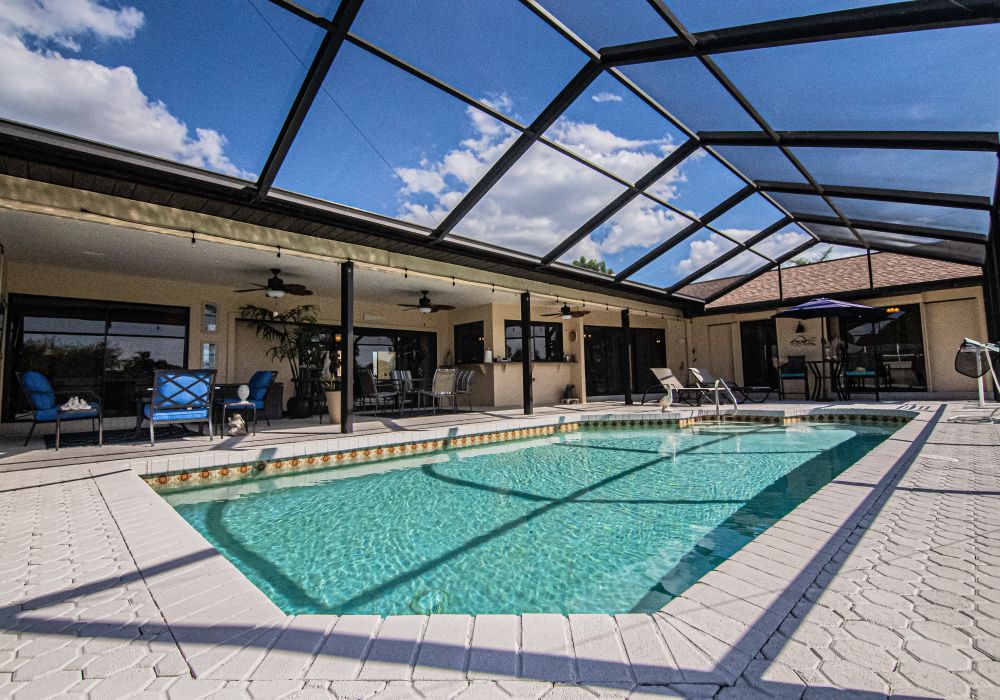The Cost of Assisted Living: Everything You Need to Know

Assisted living is a type of senior living option that provides help with daily activities such as bathing, dressing, eating, and medication management. Assisted living facilities (ALFs) offer a safe and comfortable environment for older adults who need some assistance but do not require 24/7 nursing care. Assisted living residents typically live in private or semi-private apartments with access to common areas, meals, social activities, and other services.
Assisted living can be a great choice for seniors who value their independence but also need some support with their daily needs. However, assisted living can also be expensive and challenging to afford for many families. In this article, we will explore the factors that affect the cost of assisted living, the average prices by state, the ways to pay for assisted living, and the financial assistance options available.

Factors That Affect the Cost of Assisted Living
The cost of assisted living can vary widely depending on several factors, such as:
- Location: The cost of assisted living depends largely on where you live. Different states and cities have different costs of living, real estate prices, taxes, and regulations that affect the price of assisted living. For example, according to Genworth's 2020 Cost of Care Survey, the average monthly cost of assisted living in Alaska is $6,830, while in Missouri it is $3,000.
- Level of Care: The cost of assisted living also depends on how much assistance you or your loved one needs. Most ALFs base their pricing structure on the level of care that each resident requires. A resident who does not need any specialized care can expect to pay less than someone who needs verbal instructions, reminders, or assistance with activities of daily living. Some ALFs charge a flat fee for all residents, while others charge a base fee plus additional fees for extra services or care.
- Size and Type of Apartment: The cost of assisted living also depends on the size and type of apartment you or your loved one chooses. ALFs offer different types of apartments, such as studios, one-bedroom or two-bedroom units. The larger the apartment, the higher the cost. Some ALFs also offer shared apartments, which can lower the cost but also reduce privacy and personal space.
- Amenities and Services: The cost of assisted living also depends on the amenities and services that are included or available at the facility. Some ALFs offer basic amenities and services, such as meals, housekeeping, laundry, transportation, and activities. Others offer more luxurious amenities and services, such as fitness centers, spas, pools, libraries, movie theaters, and concierge services. The more amenities and services you or your loved one wants or needs, the higher the cost.
Average Cost of Assisted Living by State
According to Genworth's 2020 Cost of Care Survey, the average monthly cost of assisted living in the U.S. is roughly $4,300 a month, or about $48,000 per year. However, this is only a national average and does not reflect the actual prices in different states or cities. However, it is also important to note that these are the average costs and do not reflect the prices down to the city level. Some Assisted Living Facilities offer rooms in the 1000-2000 range.
Below are the top 5 most expensive and cheapest average monthly costs of a private one-bedroom unit in an assisted living facility in each state.
As you can see, the cost of assisted living varies significantly by state. The most expensive states for assisted living are Alaska ($6,830), Rhode Island ($6,826), New Jersey ($6,495), Massachusetts ($6,500), and New Hampshire ($6,053). The least expensive states for assisted living are Missouri ($3,000), Mississippi ($3,500), Utah ($3,500), Alabama ($3,503), and Georgia ($3,535).
However, even within the same state, the cost of assisted living can vary by city or region. For example, according to Chief Healthcare Executive, the average monthly cost of assisted living in San Francisco is $7,100, while in Fresno it is $3,500. Similarly, the average monthly cost of assisted living in New York City is $7,000, while in Buffalo it is $3,900.
Therefore, it is important to research the specific costs of assisted living in your desired location and compare different facilities and options before making a decision.

How to Pay for Assisted Living
Paying for assisted living can be a challenge for many seniors and their families. Unlike nursing home care or home health care, which are often covered by Medicare or Medicaid for eligible individuals, assisted living is usually not covered by these programs. Therefore, most seniors and their families have to pay for assisted living out of pocket or use other sources of income or assets.
Some of the common ways to pay for assisted living include:
- Personal Savings and Income: Many seniors and their families use their personal savings and income from pensions, Social Security, or investments to pay for assisted living. However, this can be difficult or unsustainable for many people who have limited or fixed incomes or who have not saved enough for retirement.
- Long-Term Care Insurance: Long-term care insurance is a type of insurance that covers some or all of the costs of long-term care services such as assisted living. However, not many people have long-term care insurance because it can be expensive and hard to qualify for. According to the American Association for Long-Term Care Insurance (AALTCI), only about 7.5 million Americans have long-term care insurance as of 2018.
- Life Insurance: Some life insurance policies allow policyholders to access some or all of their death benefits while they are still alive if they need long-term care services such as assisted living. This can be done through a rider or an option called accelerated death benefit (ADB) or living benefit. However, not all life insurance policies offer this feature and there may be fees or restrictions involved.
- Home Equity: Some seniors and their families use their home equity to help pay for assisted living. This can be done by selling the home and using the proceeds to pay for assisted living or by taking out a loan against the home equity such as a reverse mortgage or a home equity line of credit (HELOC). However, using home equity can have tax implications and affect eligibility for Medicaid or other benefits.
- Family Support: Some seniors and their families rely on family support to help pay for assisted living. This can include financial contributions from adult children or other relatives or sharing the cost of assisted living with a spouse or a roommate. However, family support can also create emotional and financial stress and conflict among family members.
Financial Assistance Options for Assisted Living
For seniors and their families who cannot afford the full cost of assisted living out of pocket or with other sources of income or assets, there may be some financial assistance options available to help reduce the burden. Two of the common financial assistance options for assisted living include:
- Medicaid: Medicaid is a joint federal and state program that provides health care coverage to low-income individuals and families, including seniors who need long-term care services such as assisted living. However, Medicaid does not cover the cost of assisted living in every state or for every individual. Each state has its own eligibility criteria, benefits, and programs for assisted living. Some states offer Medicaid waivers that can help pay for some or all of the services provided in assisted living facilities, but these waivers are often limited in number and have waiting lists. Other states offer regular Medicaid or State Plan Medicaid that can cover some personal care services in assisted living facilities, but not room and board costs. To find out if you or your loved one qualifies for Medicaid assistance for assisted living in your state, you can contact your local Medicaid office or visit PayingForSeniorCare.com
- Veterans Benefits: Veterans and their spouses who meet certain eligibility criteria may qualify for a benefit called Aid and Attendance (A&A), which provides a monthly cash payment to help pay for long-term care services such as assisted living. According to the U.S. Department of Veterans Affairs (VA), the maximum A&A benefit amount in 2020 was $1,911 per month for a single veteran and $2,266 per month for a veteran with a spouse or dependent. To qualify for A&A, you or your spouse must have served at least 90 days of active duty, with at least one day during a period of war, and have a discharge other than dishonorable. You must also meet certain income and asset limits and require assistance with activities of daily living or be housebound due to a disability. To apply for A&A, you can contact your local VA office or visit VA.gov.
Conclusion
Assisted living can be a great option for seniors who need some help with daily activities but also want to maintain their independence and quality of life. However, assisted living can also be expensive and challenging to afford for many seniors and their families. Therefore, it is important to understand the factors that affect the cost of assisted living, the average prices by state, the ways to pay for assisted living, and the financial assistance options available.
If you or your loved one is considering assisted living, you should do your research and compare different facilities and options in your desired location. Using Search Tools like Seniors Places you can directly contact communities and set up tours and compare amenities. You should also consult with a financial planner or an elder law attorney to help you plan ahead and find the best way to finance your assisted living needs.
Assisted living can be a rewarding and fulfilling experience for seniors who need some assistance but also value their independence. With proper planning and preparation, you can find an affordable and suitable assisted living facility that meets your needs and preferences.